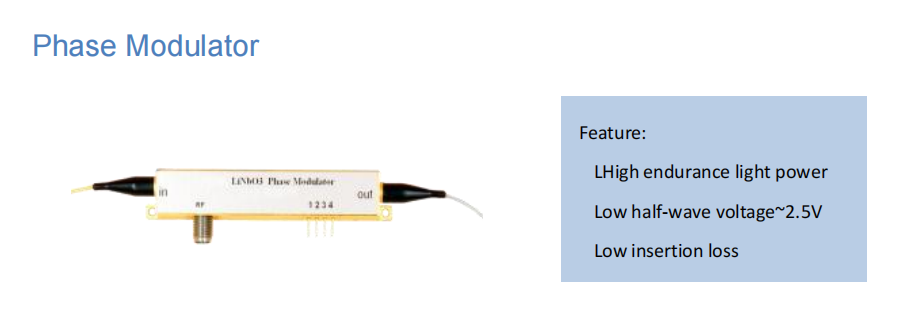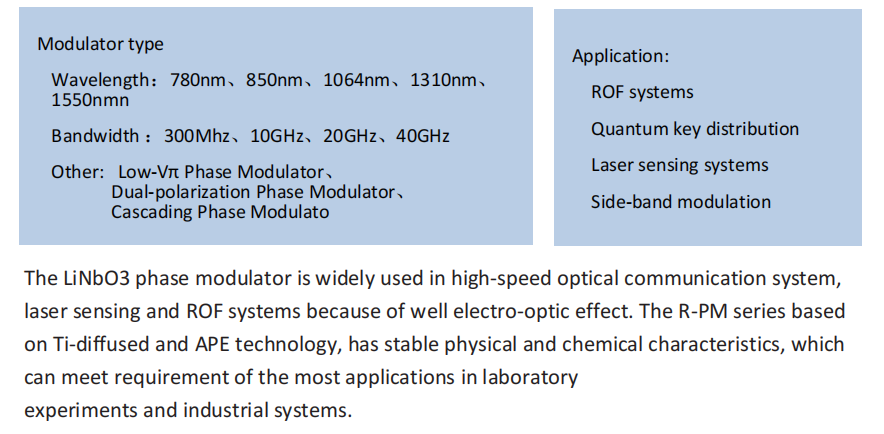Exploring the mysteries of light: New applications for Electro-Optic Modulator LiNbO3 phase modulators
LiNbO3 modulator Phase modulator is a key element that can control the phase change of light wave, and it plays a core role in modern optical communication and sensing. Recently, a new type of phase modulator has attracted the attention of researchers and engineers, which operates at three wavelengths of 780nm, 850nm and 1064nm, with modulation bandwidths of up to 300MHz, 10GHz, 20GHz and 40GHz.
The most important feature of this phase modulator is high modulation bandwidth and low insertion loss. Insertion loss refers to the decrease in intensity or energy of the optical signal after passing through the modulator. The insertion loss of this phase modulator is extremely low, which ensures the integrity of the signal, so that the signal can maintain a high strength after modulation.
In addition, the phase modulator has the characteristic of low half-wave voltage. The half-wave voltage is the voltage that needs to be applied to the modulator in order to change the phase of the light by 180 degrees. The low half-wave voltage means that only a lower voltage is needed to achieve a significant change in the optical phase, which greatly reduces the energy consumption of the device.
In terms of application fields, this new phase modulator can be widely used in optical fiber sensing, optical fiber communication, phase delay (shifter), and quantum communication. In optical fiber sensing, phase modulator can improve the sensitivity and resolution of the sensor. In optical fiber communication, it can improve the communication speed and data transmission efficiency. In phase delay (shifter), it can precisely control the direction of light propagation; In quantum communication, it can be used to control and manipulate quantum states.
Overall, the new phase modulator provides us with more efficient and accurate optical control means, which will bring revolutionary changes in many fields. We expect this technology to be further developed and perfected in the future, revealing more optical mysteries for us.






















